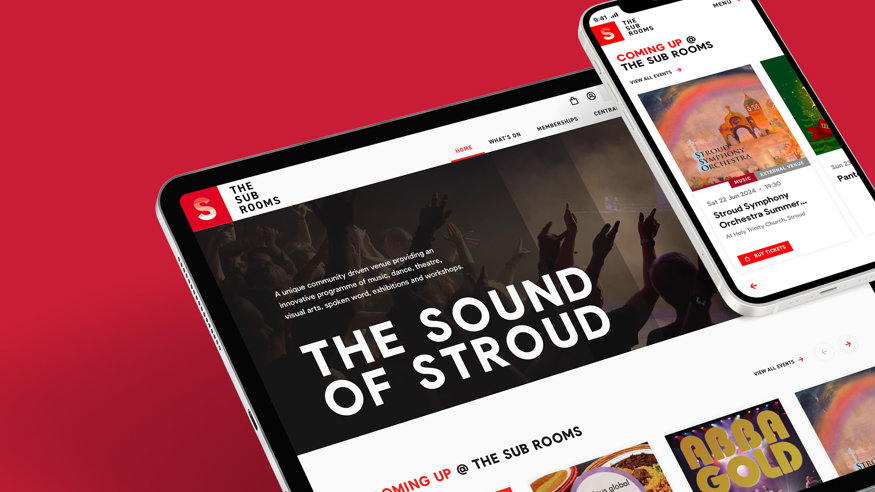Umbraco vs. Contentful: choosing the right CMS for your project

Choosing the right content management system (CMS) is crucial to shaping a successful digital experience. Among the top contenders, Umbraco and Contentful stand out—each offering robust capabilities but catering to different needs. Whether you're creating a marketing website, a custom web application, or a content-rich platform, understanding the unique advantages and trade-offs of these systems is essential to making an informed choice.
Here’s a comparison of Umbraco vs. Contentful to help you decide which is best suited to the needs of your business.
Overview
Umbraco is an open-source CMS built on .NET. Offering a traditional approach to content management with optional headless features, it’s well-suited to organisations looking for flexibility and full control over how their content is managed, hosted, and rendered.
In contrast, Contentful is a fully headless, API-first CMS designed for multi-channel content distribution. It allows teams to manage content in a centralised way and deliver it to websites, mobile apps, IoT devices, and beyond, making it ideal for decoupled architectures (although Umbraco could also be configured to do this).
Developer experience
Designed to operate within a .NET environment, Umbraco is well suited to developers with experience in C# and ASP.NET and is ideal for custom builds where integration with other .NET and third party services is a priority.
Contentful on the other hand, delivers a language-agnostic developer experience with RESTful and GraphQL APIs, making it a strong fit for modern front-end frameworks like React, Vue, or Svelte, as well as JAMstack architectures and continuous deployment workflows.
Content editor experience
For content editors, Umbraco offers a visual, intuitive interface with a familiar page-tree structure, WYSIWYG editing, media libraries, and preview capabilities - making it ideal for teams that want a CMS with a traditional, visual editing experience.
In comparison, and whilst clean and modern, the Contentful editor experience is heavily structured to allow for multi-channel content use, which can feel abstract especially for non-technical users.
Hosting & infrastructure
Umbraco can be hosted on a wide variety of platforms, including Azure, VPSs or via Umbraco Cloud, giving organisations full control over hosting, data residency, and infrastructure - especially valuable for enterprise projects or organisations with compliance and security requirements.
In contrast, Contentful, as a SaaS product, is fully managed and hosted exclusively by them, eliminating the need for server maintenance, software upgrades, and infrastructure planning. That said, this model can limit flexibility and control over hosting environments, which may be a potential concern for teams with strict compliance requirements, data residency needs, or a preference for more flexible solutions.
Extensibility & ecosystem
Umbraco features a mature plugin ecosystem with many open-source and commercial packages for SEO, forms, and e-commerce (like Vendr). It also allows for deep customisation through .NET code, making it ideal for projects that require bespoke functionality.
Contentful offers strong extensibility through its API, webhooks, and integrations with modern DevOps tools like Netlify, Gatsby, and Vercel, but with a still-maturing marketplace, it often relies on developers to implement custom logic.
Pricing
Umbraco is free and open-source making it a budget-friendly option for developers and small teams, whilst its managed Umbraco Cloud service has tiered pricing plans that cater to both small projects and large enterprises (although other Umbraco hosting solutions are also available).
Contentful also offers a free tier suitable for basic use, however its paid plans scale quickly depending on the number of content types, locales, users, and API calls, with the costs becoming significant for large-scale projects, especially if usage is high or team size grows.
Use cases
Umbraco is a great fit for organisations that want a full-featured website CMS with control over both content and presentation and works especially well within Microsoft-based environments and for teams familiar with .NET development.
Contentful, on the other hand, is ideal for digital experiences that span multiple platforms such as website, mobile apps, voice interfaces, or IoT devices.
Final thoughts
Both Umbraco and Contentful are modern CMS platforms, but they cater to different architectural preferences and team workflows. Umbraco excels in traditional web development scenarios where design and content are tightly coupled, whereas Contentful stands out in headless, omnichannel environments where content must be delivered flexibly and efficiently across a variety of endpoints.
The right choice ultimately depends on your project’s complexity, your team’s technical strengths, and how you envision your digital ecosystem evolving.
Interested in hearing more?
Need help deciding between Umbraco and Contentful for your business? Get in touch with the 16i team.
Share article:

2025 16i Christmas opening hours
Please note our hours will be slightly different during the holidays.
Read more
SGGBA 2025: Winners revealed
Congratulations to the winners of the SoGlos Business Awards 2025! Find out who they are!
Read more
Upgrading to Umbraco 17: a strategic investment for your business
Used and trusted by both developers and marketers, Umbraco offers a high level of customisability, with the latest long-term-supported (LTS) version (Umbraco 17) currently scheduled for release in November 2025. Featuring improved performance and developer tooling, alongside support for the latest .NET versions, Umbraco 17 offers a number of benefits including enhanced security, streamlined workflows, and improved scalability.
Read more
How to avoid website project horror stories!
Maybe you've been there before, maybe this is your first time creating a website. We have seen website projects at all stages turn from dreams into nightmares very easily, often being the ones at the other end helping our soon to be clients put it back on the right path.
Read more
Exploring the benefits of Umbraco 17: a leap forward in CMS flexibility and performance
Umbraco has long held the reputation as a flexible, developer‑friendly content management system (CMS) and with the release of Umbraco 17 scheduled for November 2025, the platform is continuing to evolve. Umbraco 17 will be the next Long‑Term Support (LTS) version, aligned with the upcoming .NET 10 LTS release, and is expected to include enhancements in performance, developer experience, and content workflow modernisation.
Read more
The future is bright for the Sub Rooms
New website and Spektrix integration helped Sub Rooms turn a corner
Read more
Website builders vs bespoke: which is right for your business?
In a digital-first world, a company’s website (and its overall effectiveness) is of paramount importance, serving as both the first impression and initial introduction to a brand. Traditionally built from the ground up by experienced developers, website creation has become increasingly accessible, primarily due to the rise of website builders such as Squarespace, Wix, Weebly, and Webflow, These platforms offer powerful tools, sleek templates, and rapid setup options, without the need for direct developer involvement. However, for businesses with more complex or unique requirements, they can be limiting, with many instead opting for bespoke development tailored to the specific project goals, workflows, and user experience. This blog outlines the pros and cons of each –off-the-shelf website builders vs bespoke development.
Read more
How to spot a text message, iMessage or WhatsApp scam
Top 6 red flags for suspicious text messages
Read more